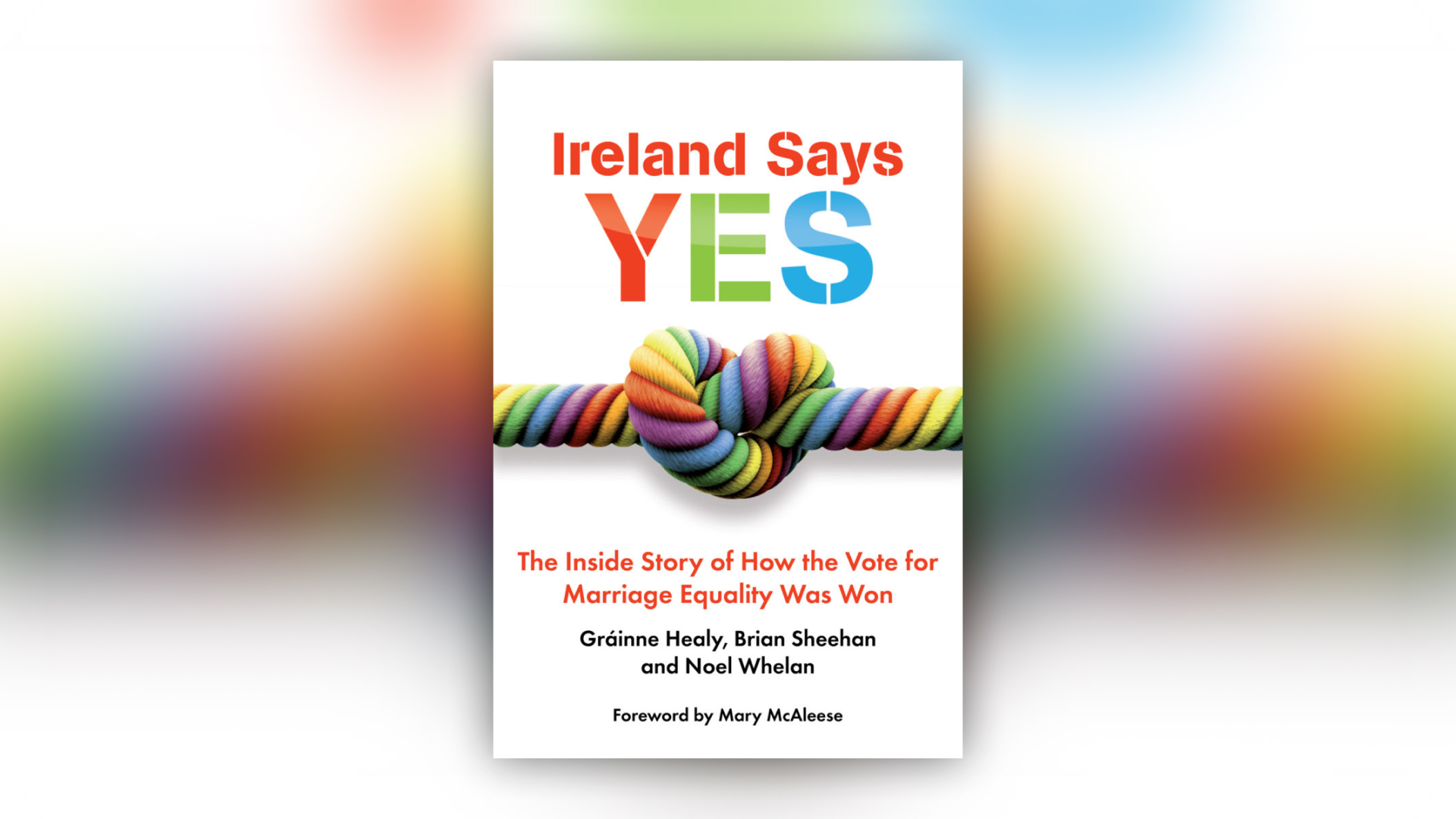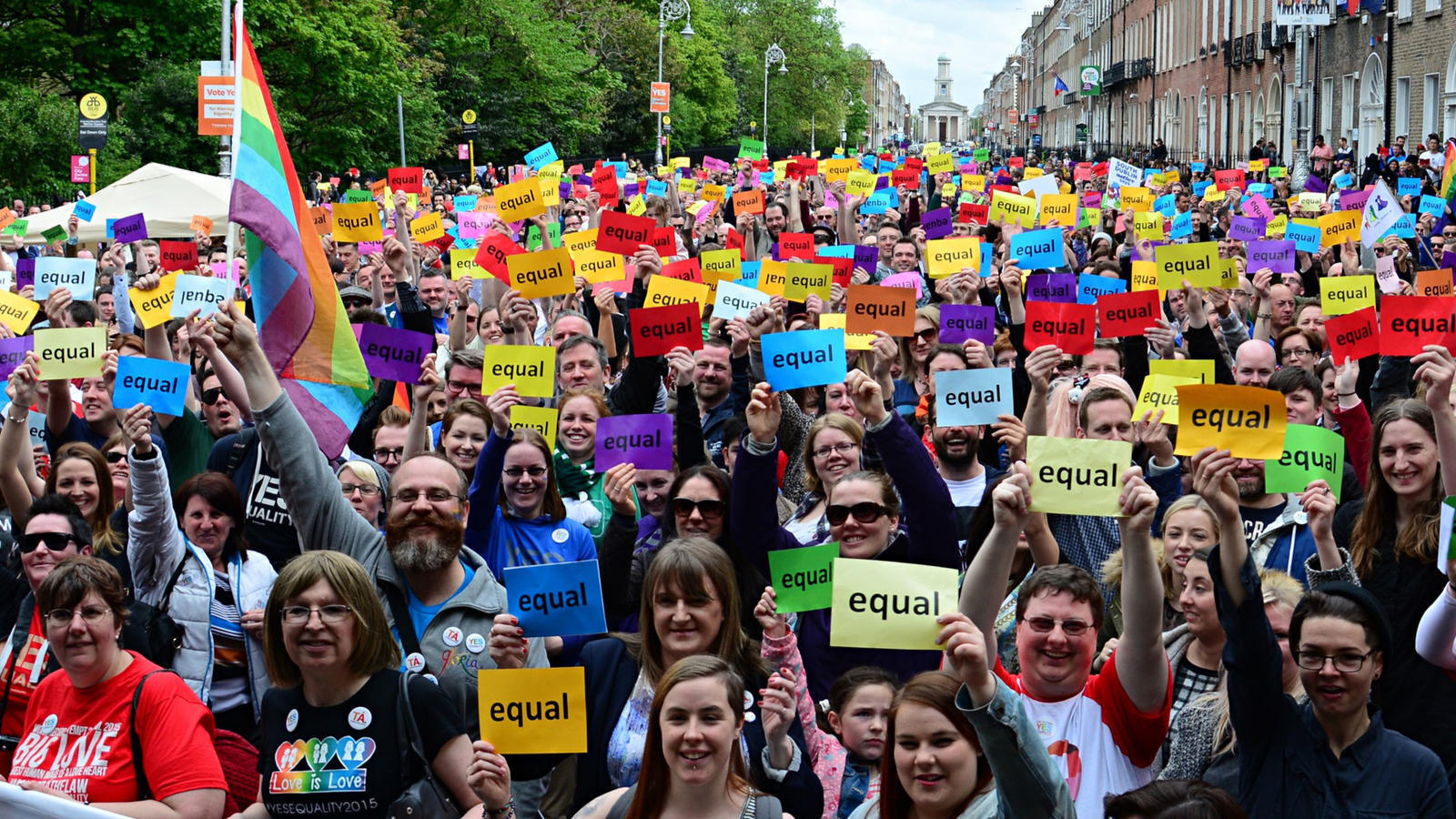Resources
Ireland Says Yes by Brian Sheehan, Gráinne Healy, and Noel Whelan
The inside story of how the vote for marriage equality was won.
Stephanie Wong | 23 May 2018

It was only in 1993 that homosexuality was decriminalised in Ireland. Yet, at 7.20 pm, May 23rd, 2015, Ireland became the first country in the world to introduce marriage equality by public vote.
There are moments in a country that define, reflect and showcase the very best instincts and character of its peopleWhen Ireland said a resounding Yes to equality for its gay and lesbian citizens was such a moment.
Three takeaways
- Stories stick
- Messengers matter
- Watch your tone
Stories stick

Tell stories rather than lecture, ask rather than demand, discuss rather than make a political pitch.
In the months leading up to the referendum, many residents of Ireland felt disengaged on the issue of marriage equality. Many believed it was not their issue. Campaigners for Yes Equality would use a storytelling strategy to move many of them to act and vote yes for marriage equality.
The Yes Equality army was being equipped to go out and win with their hearts and minds.
LGBTQ+ people, their mums and dads, neighbours and grannies began to speak out about why saying yes to equality was so important. Public support grew through the personal testimonies of real people. Volunteers of the campaign were trained to tell their story about why they believed in marriage equality. Once trained up, volunteers brought their stories to the doorsteps of Ireland. The courage of ordinary peoples stories and their real experiences, won the war of words.
Messengers Matter
About real people living real lives, as we speak all across Ireland.
The campaign would use different messengers to move the moveable million.
Soft voters; those who were neither a hard yes or no for marriage equality, were more likely to be persuaded by people like themselves than celebrities. Middle-aged spiritual women were very effective at persuading Catholic voters to consider voting yes. Celebrities were also targeted to speak out to their thousands of followers and generate conversation.
Greenbow, the LGBT deaf group made two videos encouraging deaf people to vote. There were mobilising efforts like Bring your family with you with videos of young people bringing family members to vote with them at the polling station. Ring your granny, led by Trinity Students Union, produced viral videos of young people speaking to their grandparents and hearing them say, they will vote yes on voting day.
Watch your tone
A lot of investment was put into the design of the campaign to ensure the right tone was made from the start to;
Energise and inspire the public imagination and engage people across all ages.
The Yes Equality campaign branding became iconic. It built a value-based identity that everyone would be happy to stand for.
Not every thought needs to be tweeted.
To win a referendum requires you to persuade and reassure the broadest audience. Yes Equality believed this could only be achieved by maintaining a positive and constructive tone throughout the campaign. This is a hard thing to do when the general public sometimes says awful things to you or about people you love and when faced with the hostile narrative of the No campaign day in and day out. Also, like all campaigns, people get left out. This unwelcoming compromise for some created internal and external tensions. This was a helpful honesty in the book that I know all of us campaigners, organisers and activists can relate to.
The opposition can help you
Right pictures are as important as the right words.
What the No lacked in activists they made up for in money. They had a lot of cash. The Euros were transformed into professional posters, literature and a paid online presence. 30,000 posters were spread across Ireland: the most ever seen outside of a general election. One of the main posters was called Mothers and Fathers Matter. The target of the poster was not same-sex marriage but the hiding dark shadow of public concern: same-sex parenting.
The poster was a smiling family with the message, children deserve a mother and father. What No obviously was not expecting was the wave of backlash to follow: mostly led by single parents.
The Yes Equality campaign galvanised on this energy and sent out posters and online posts saying, Dont Get Angry Donate and Dont Get Angry Canvass. €24,000 was raised overnight.
Other key points
Love between two people should never be undermined.
- The referendum did not pop out of no-where. Groups had been building momentum for that moment for years before polling day. Nurturing groups throughout the country gave the opportunity to mobilise, surge online campaigning, have those family conversations and one-to-one meetings leading to the vote.
- Volunteers are invaluable so treat them that way.
- Learn from what has been done before. Speaking to people outside of Ireland, especially from the United States gave the Yes Campaign invaluable lessons to hit the ground running.
- Money matters. At both national and local level, Yes Equality’s attention was constantly focused on innovative ways to attract funding.
- Lobby politicians and visits their clinics.
- Get recognised: do not ignore the importance of the media.
- Pressure from LGBTQ+ activist canvassing and the burnout. It is hard to put your personal stories out there into the public. The Yes Equality campaign ran a support service to support their canvassers to build resilience and also to step out when they needed to.
In the end, this was a peoples referendum and Ireland said yes to marriage equality, to love and fairness. There is still more to do for our LGBTQ+ communities. A lot was left out in this campaign. The work doesnt end here; this was just one stop along a long, difficult road ahead.